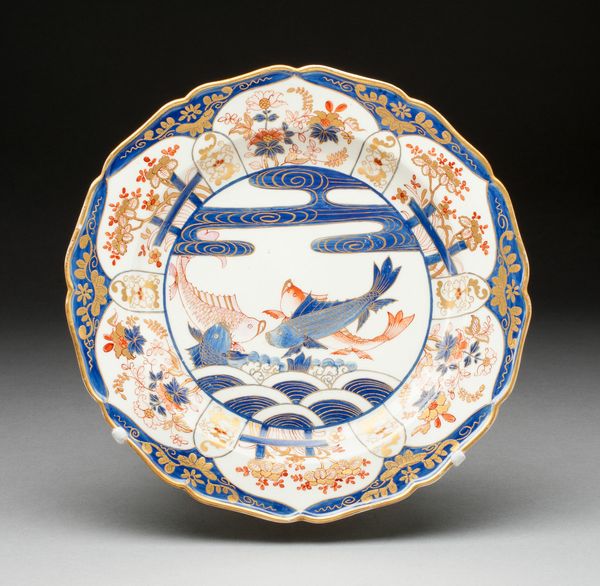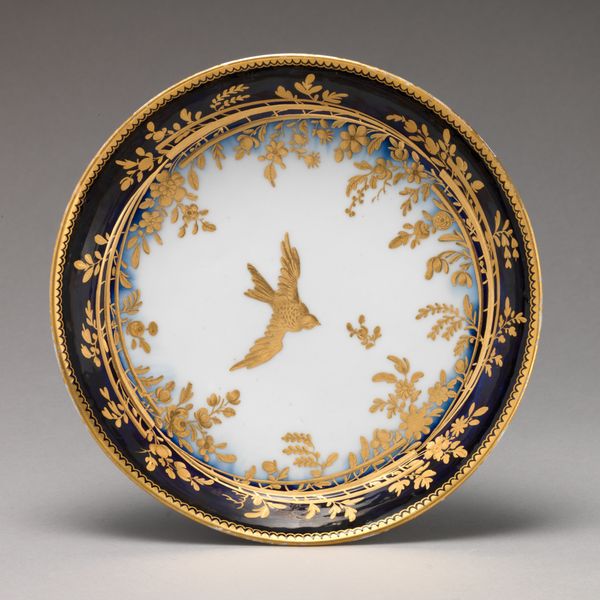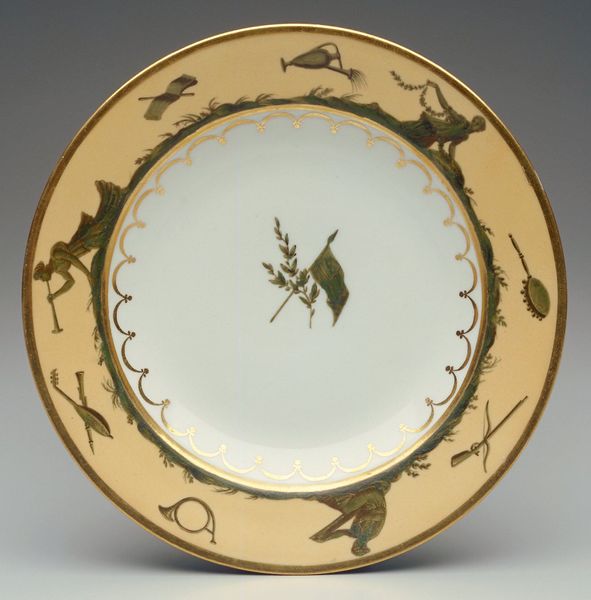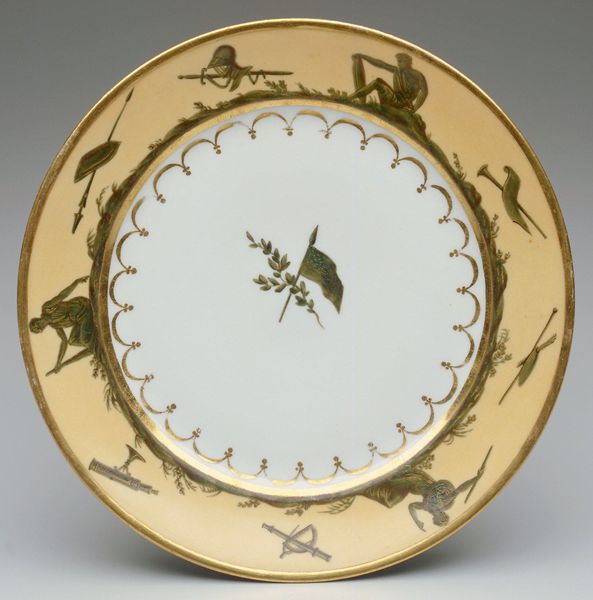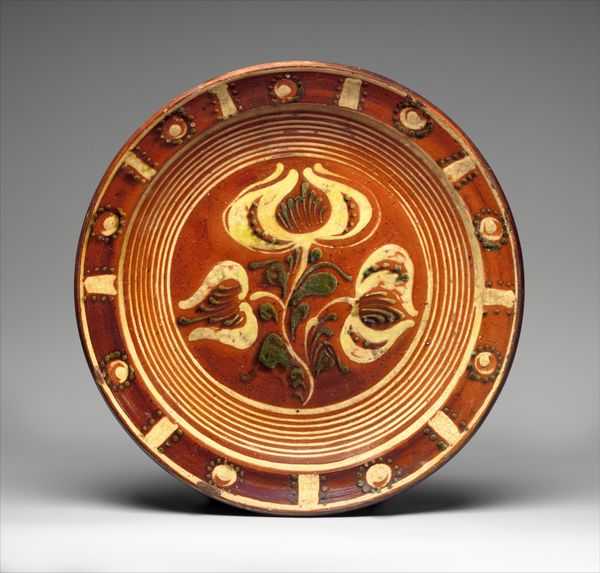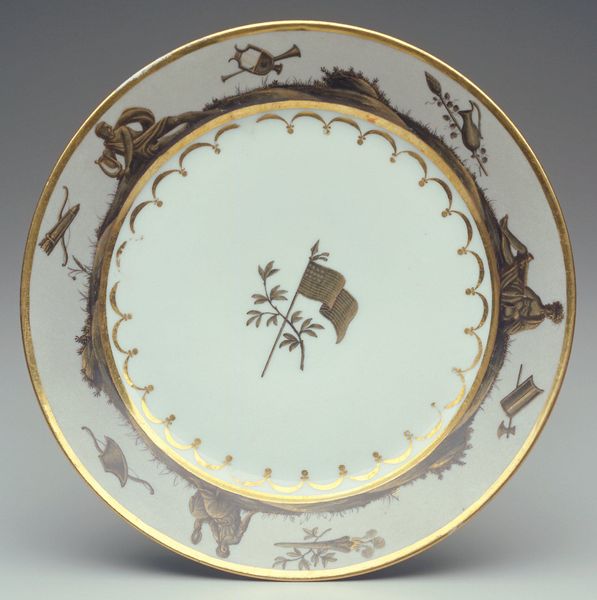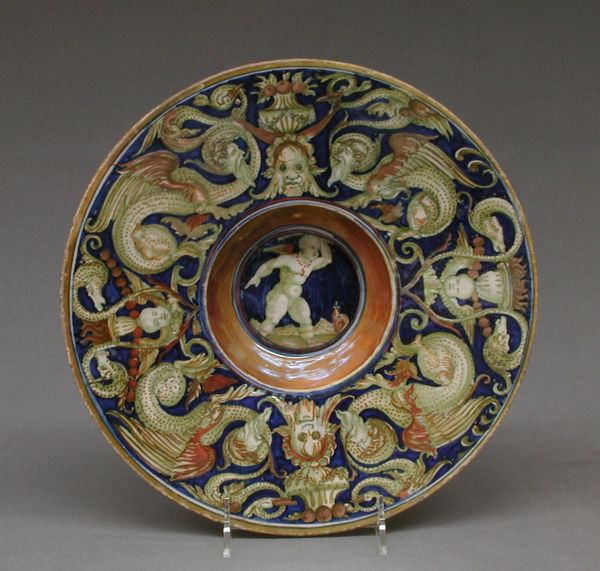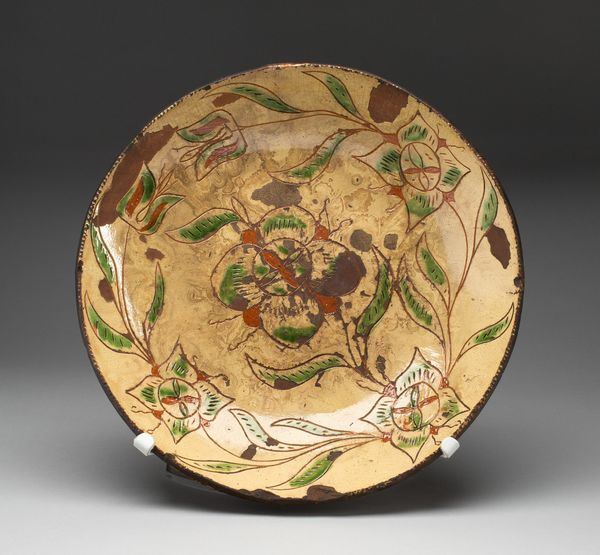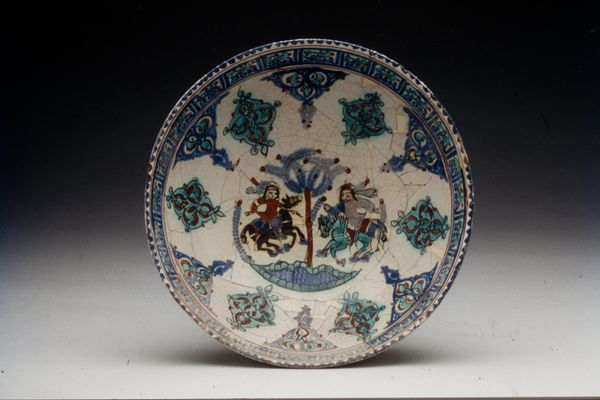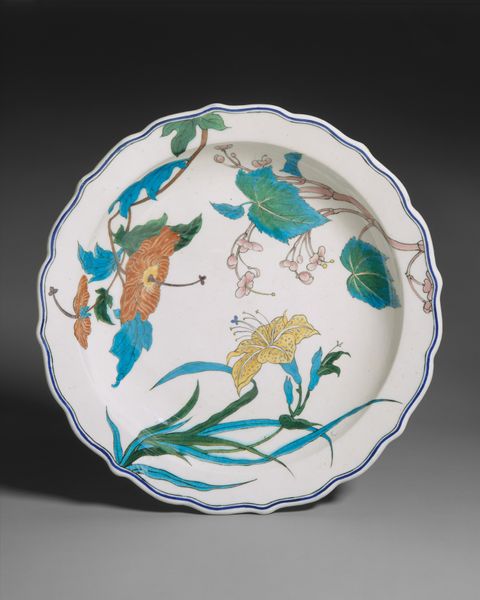
drawing, ceramic, porcelain
#
drawing
#
asian-art
#
ceramic
#
bird
#
porcelain
#
stoneware
#
orientalism
#
ceramic
#
decorative-art
Dimensions: Diam. 7 in. (17.8 cm) (hexagonal)
Copyright: Public Domain
Editor: Here we have a porcelain plate created sometime between 1882 and 1889, currently residing at the Met. It depicts birds in gold against a vibrant cobalt blue background, and strikes me as a beautiful fusion of cultures. What stands out to you? Curator: It whispers to me of long voyages, the exotic East seen through a Western lens, what they called Orientalism back then. See how the Japanese maple leaves intertwine with images of native fauna? Someone was dreaming of far-off places. The very deliberate way in which the composition is constructed, with its slightly off-center tree trunk motif. Makes you wonder what’s outside the frame, doesn’t it? Editor: I suppose that depending on its display, the placement of that frame might either work with or against the scene on the plate itself. The use of gold against the blue gives it a formal almost royal air, but how should we think about its cultural context, given its creation by James Callowhill? Curator: It invites speculation, doesn't it? Maybe Callowhill found refuge in rendering these graceful birds mid-flight, imagining a world unbound by earthly constraints. This kind of piece also offers us insights into the prevailing aesthetics and fascinations of that period. One might ask, what personal longing drove him to create this miniature paradise on porcelain? And what did it mean to the original owner? Editor: It’s more than just decoration, isn’t it? It’s a portal. I can definitely better appreciate it as an embodiment of cross-cultural fascination. Curator: Precisely! It seems the beauty of the piece really lies in its delicate balancing act, straddling tangible craftsmanship, dream-like artistry, and also what can easily be seen as Western art-historical blindspots.
Comments
No comments
Be the first to comment and join the conversation on the ultimate creative platform.
